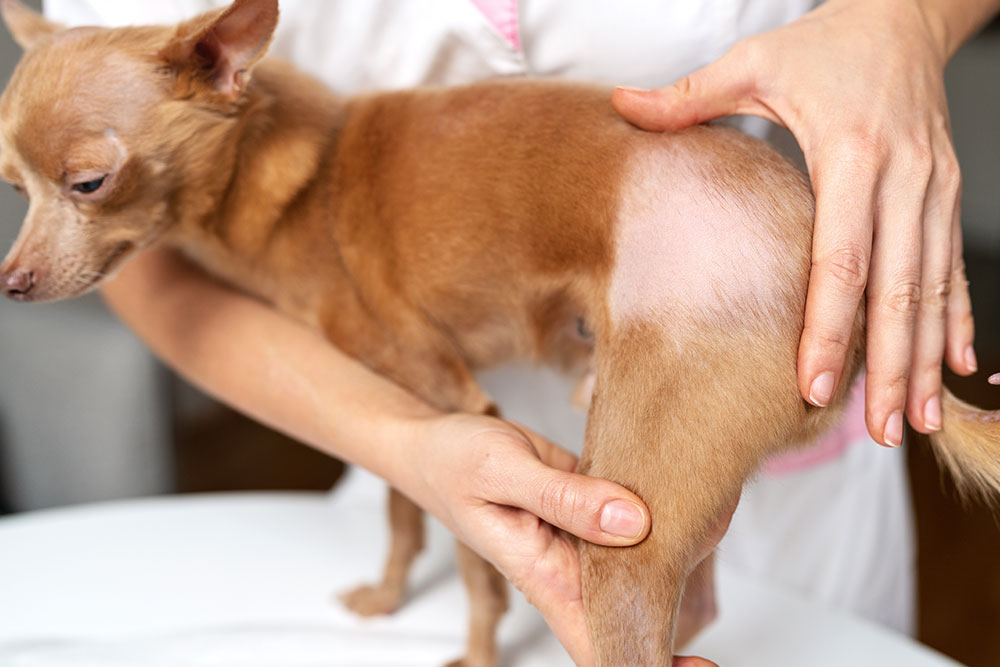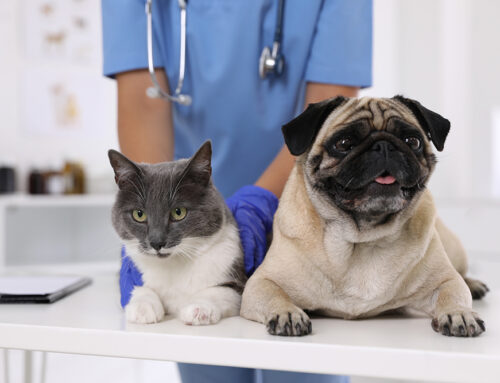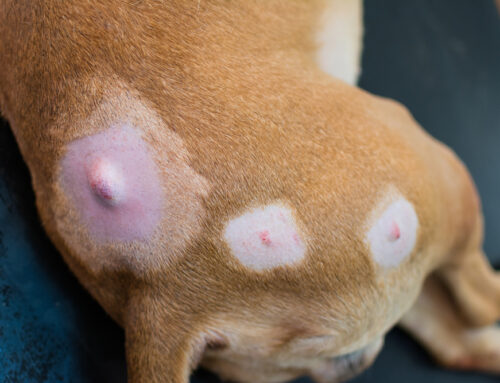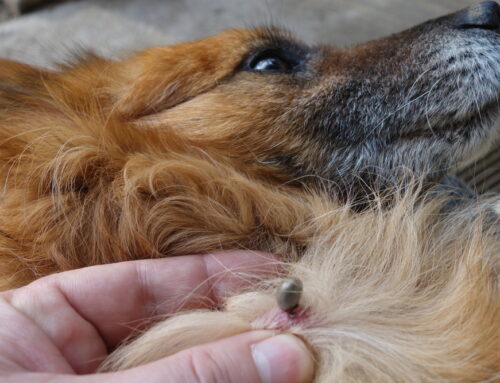Understanding Your Pet’s Skin Masses: A Guide for Concerned Owners in Austin, Texas
Finding a lump or bump on your pet can be concerning, but not all skin masses are cause for alarm. Skin growths can range from harmless fatty tumors (lipomas) to potentially serious malignancies, and early detection is key to ensuring your pet’s health.
At Star of Texas Veterinary Hospital in Austin, Texas, we help pet owners understand the different types of skin masses, causes, diagnostic methods, and treatment options to ensure the best possible care for their pets.
Types of Skin Masses and Their Characteristics
Not all lumps require urgent treatment, but knowing the difference between benign and malignant growths can help you make informed decisions about your pet’s health.
Benign Masses: When You Might Not Need to Worry
Many skin masses are non-cancerous and require only monitoring. Common benign growths include:
- Lipomas – Soft, fatty lumps under the skin, usually slow-growing and non-painful.
- Sebaceous Cysts – Fluid-filled sacs that may rupture and drain but typically don’t pose a health risk.
- Warts (Papillomas) – Small, raised bumps caused by a virus, often seen in younger pets.
- Histiocytomas – Red, button-like tumors commonly found in young dogs, often resolving on their own.
While benign masses aren’t inherently dangerous, they can grow large enough to affect mobility or become irritated. Regular monitoring is important to ensure they don’t cause discomfort.
Potentially Harmful Masses: Signs That Call for Immediate Attention
Some masses require urgent veterinary care, as they may indicate a malignant tumor. Warning signs include:
- Rapid growth – A lump that increases in size quickly.
- Ulceration or bleeding – Masses that break open or won’t heal.
- Firm, fixed lumps – Growths that feel hard and don’t move under the skin.
- Pain or behavioral changes – Your pet suddenly licking, biting, or avoiding touch in the affected area.
Common malignant tumors in pets include:
- Mast Cell Tumors – Can be highly aggressive and require prompt removal.
- Melanomas – Dark-colored masses that can be benign or malignant.
- Squamous Cell Carcinomas – Often linked to sun exposure and commonly found on light-skinned pets.
If you notice any of these warning signs, schedule an appointment immediately. Contact us today for an evaluation.
Other Types of Lumps and Bumps in Pets
Not all lumps are tumors—many skin masses in pets are benign or caused by infections, inflammation, or environmental factors. While some are harmless, others may require veterinary attention.
- Abscesses – Pockets of pus caused by bacterial infections, often from cat fights, puncture wounds, or foxtails. These lumps are usually warm, painful, and may rupture or ooze fluid.
- Hygromas – Fluid-filled swellings that develop over pressure points (like elbows) due to repeated trauma or lying on hard surfaces. They are typically not painful but can become infected if left untreated.
- Calluses – Thickened, hairless skin that forms on bony areas like elbows and hocks, especially in large-breed dogs. While harmless, deep cracks or infections may require treatment.
- Enlarged Lymph Nodes – Swollen lymph nodes can occur due to infections, immune system responses, or, in rare cases, cancer. If lymph node swelling is persistent or accompanied by other symptoms, a vet visit is recommended.
- Cysts – Fluid-filled sacs caused by clogged hair follicles or sebaceous glands. While generally benign, they can rupture or become infected.
Causes of Cancerous Skin Masses in Dogs and Cats
There is no single cause of skin masses, but several factors increase your pet’s risk:
- Genetics – Some breeds, like Boxers and Golden Retrievers, are more prone to developing tumors.
- Aging – Older pets have a higher likelihood of developing both benign and malignant masses.
- Sun Exposure – Light-colored pets are at increased risk of skin cancer from prolonged UV exposure.
- Chronic Inflammation or Infections – Long-term skin irritation can lead to abnormal tissue growth.
While some factors are unavoidable, regular veterinary exams can help catch any suspicious growths early.
How Veterinarians Diagnose Skin Masses
At Star of Texas Veterinary Hospital, we use advanced diagnostic techniques to assess skin masses, including:
1. Fine Needle Aspiration (FNA)
A small needle collects cells from the mass, which are then examined under a microscope to determine if the growth is benign or malignant.
2. Biopsy
If further testing is needed, a biopsy removes a small tissue sample for detailed analysis. This test provides definitive answers about the nature of the mass.
3. Diagnostic Imaging (X-rays or Ultrasound)
For lumps that may extend beneath the skin, imaging helps determine if the mass has spread internally.
Early detection and accurate diagnosis greatly improve treatment outcomes. Learn more about our diagnostic services.
Treatment Options for Skin Masses
Treatment depends on the type, location, and size of the mass, as well as your pet’s overall health.
Non-Surgical Approaches
If a mass is benign and not causing problems, we may recommend:
- Monitoring growth over time – Measuring and tracking changes.
- Medication for inflammation – Some skin masses shrink with anti-inflammatory therapy.
- Lifestyle adjustments – Keeping your pet comfortable and preventing irritation.
Regular vet visits ensure that even benign lumps don’t develop complications.
Surgical Removal
Surgery is often the best option for:
✔ Malignant tumors that pose a serious health risk.
✔ Rapidly growing masses that interfere with movement or daily activities.
✔ Ulcerated or infected lumps causing pain or discomfort.
At Star of Texas Veterinary Hospital, we perform safe, precise surgical procedures, ensuring a smooth recovery with pain management and post-op care.
Read our after-surgery care guide.
How to Monitor and Manage Skin Masses at Home
You can play an active role in monitoring your pet’s skin health by:
✔ Checking your pet’s skin weekly – Feel for new lumps or changes in existing ones.
✔ Measuring and documenting lumps – Track size, texture, and color.
✔ Noting behavioral changes – Increased licking, scratching, or signs of discomfort.
If you notice sudden growth, irritation, or new symptoms, schedule an appointment promptly. Book your pet’s exam today.
Preventing Skin Masses in Pets
While not all skin growths are preventable, certain steps can lower the risk:
✔ Maintain a healthy diet – Supports strong immune function and skin health.
✔ Use pet-safe sunscreen – Especially for light-skinned pets who spend time outdoors.
✔ Keep up with regular vet check-ups – Early detection is the key to successful treatment.
Your veterinarian is your best resource for ensuring your pet stays healthy and comfortable.
When to Seek Veterinary Care
Not sure if your pet’s lump is serious? Here’s when to call your vet:
– The lump changes in size, shape, or texture rapidly.
– The mass bleeds, ulcerates, or oozes discharge.
– Your pet appears in pain or constantly licks the area.
– The lump is firm, immovable, or deep under the skin.
Early intervention can prevent complications and improve your pet’s prognosis.
Prioritizing Your Pet’s Skin Health
Skin masses in pets aren’t always cause for alarm, but early evaluation is key to ensuring your pet’s health and well-being. Whether a lump is harmless or requires treatment, our team at Star of Texas Veterinary Hospital is here to provide expert guidance and compassionate care.
Schedule an exam today for peace of mind and expert evaluation.







